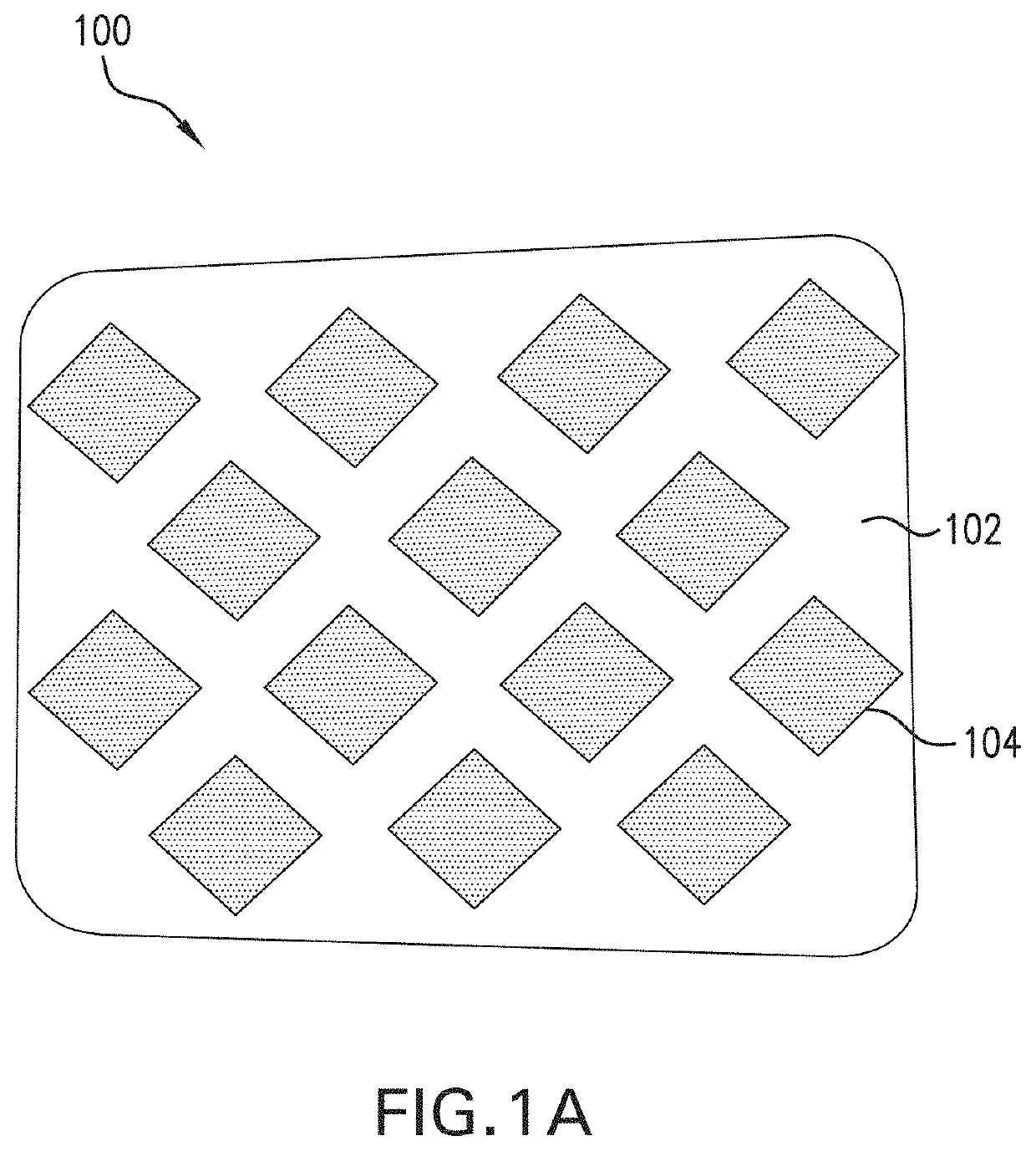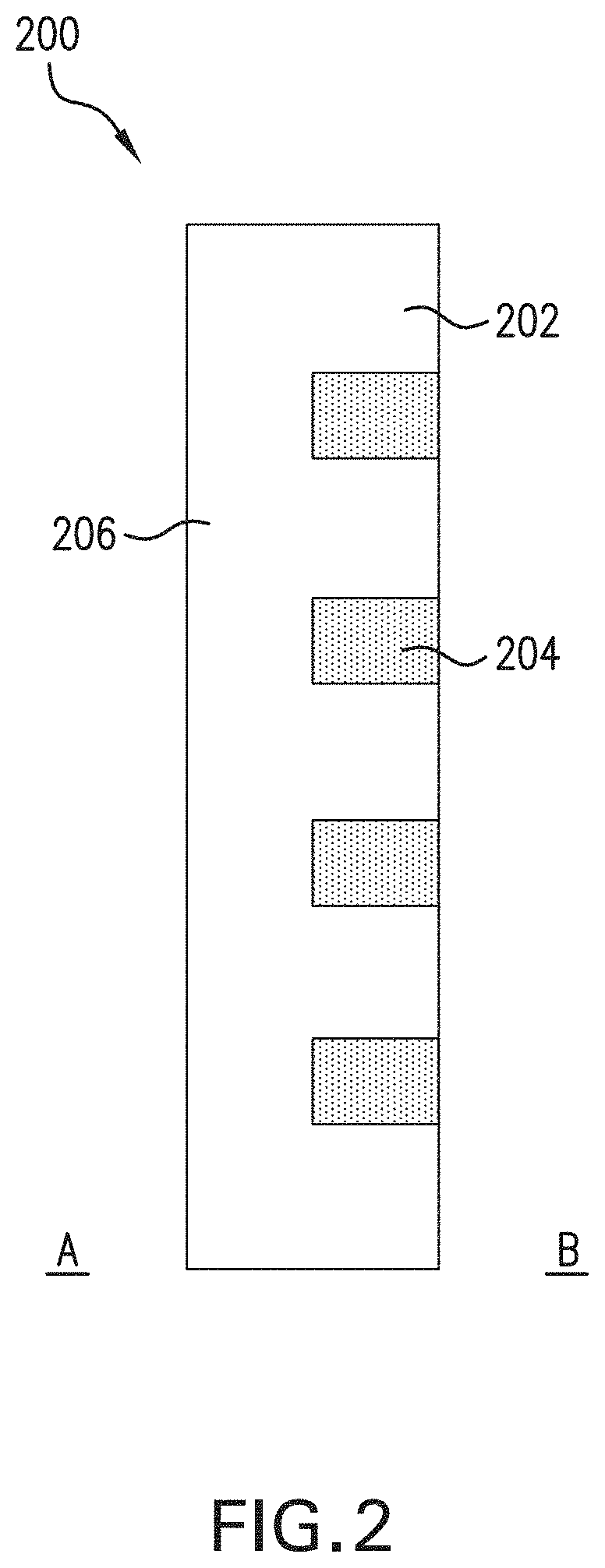Moisture control fabrics
a technology of fabric and moisture control, applied in the direction of synthetic resin layered products, protective garments, domestic upholstery, etc., can solve the problems of increasing the rigidity of the fabric, uncomfortable feeling, and the humidity level surrounding the skin, so as to improve the moisture control capacity, resist staining, and reduce the effect of clinging to the body
- Summary
- Abstract
- Description
- Claims
- Application Information
AI Technical Summary
Benefits of technology
Problems solved by technology
Method used
Image
Examples
example 1
Control Behavior Comparison
[0101]Various patterns were examined for their moisture control properties, as shown in FIGS. 10A-10G. All six patterned samples (for experimental patterns, see FIGS. 10A-10F) had partially hydrophobic inner surfaces, completely hydrophobic outer surfaces, and identical hydrophilic surface areas (samples were 10 cm by 10 cm cut from 100% polyester interlock, machine screen-printed with a high viscosity hydrophobic ink using an 160 mesh size screen on the inner and outer surfaces to pattern a 50 cm2 inner surface area). Three patterns (FIGS. 10A-10C) were designed to have isolated hydrophilic areas, while the other three patterns (FIGS. 10D-10F) were designed to have connected hydrophilic areas that allowed moisture to move over the whole hydrophilic surface area of the pattern. The control pattern sample (see FIG. 10G) had a completely hydrophilic inner surface and a completely hydrophobic outer surface (see, e.g., Schoeller 3XDry® technology; sample was 1...
example 2
l on Human Body
[0110]A wear trial was conducted by a male athlete wearing a prototype shirt 1400 (100% cotton, single jersey knit fabric, fabric weight 150 g / m2) that was treated with the improved moisture control fabric of the present disclosure on the inside of a shirt on one side 1410. The prototype shirt was constructed using a cotton t-shirt. First, the right sleeve of the t-shirt was removed. Second, the outer surface of the right sleeve and the right side of the shirt were covered by a completely hydrophobic coating to about 50% penetration. Third, the coated t-shirt and sleeve were sent through an oven to dry the coating. Fourth, the t-shirt and the sleeve were turned inside out and printed with a hydrophobic pattern (similar to the one depicted in FIG. 4B) surrounded by a hydrophobic barrier (similar to hydrophobic barriers / boundaries 602 and 616 illustrated in FIGS. 6A & 6B). Fifth, the printed t-shirt and sleeve were sent through an oven to completely cure the coatings. F...
PUM
| Property | Measurement | Unit |
|---|---|---|
| contact angle | aaaaa | aaaaa |
| surface area | aaaaa | aaaaa |
| surface area | aaaaa | aaaaa |
Abstract
Description
Claims
Application Information
 Login to View More
Login to View More - R&D
- Intellectual Property
- Life Sciences
- Materials
- Tech Scout
- Unparalleled Data Quality
- Higher Quality Content
- 60% Fewer Hallucinations
Browse by: Latest US Patents, China's latest patents, Technical Efficacy Thesaurus, Application Domain, Technology Topic, Popular Technical Reports.
© 2025 PatSnap. All rights reserved.Legal|Privacy policy|Modern Slavery Act Transparency Statement|Sitemap|About US| Contact US: help@patsnap.com



